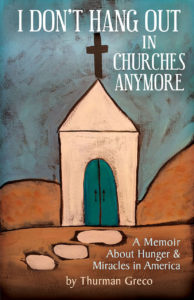March 4, 2024 at 4:28 pm
THIS BLOG IS CELEBRATING ITS 10TH YEAR OF PUBLICATION!

August is a wonderful time to be in Woodstock. The sun shines brighter. The breezes are unbelievable. Music is everywhere. And, finally, there is that August moon.
Woodstock is mystical and magical and a little bit too good to be true all year round but August is special.
People put on their swimsuits, grab some snacks, and head down Tannery Brook Road to the stream. We don’t need many more directions than that. If it’s your first visit, you’ll know you’re there when you get there..
As you go down Tannery Brook, you’ll cross over the Brook at Hillside Terrace.
Keep going. This isn’t the bridge you’re looking for.
Your next landmark is Streamside Terrace – on your left. It’s a fully armed street: Homeowners have put up “No Parking Signs” they got at Houst. They’ve posted them on their street by the road. Keep going past this street.
Next is the second bridge to cross Tannery Brook Road. You’re almost there! Cross over the bridge. If you turn left after crossing the bridge, you’ll be on Millstream. Going to the right will put you on Ohayo Mountain Road.
Just across the bridge, Tannery Brook dead ends at this intersection. This is the place! Town signs are all along the road: “NO PARKING”. As far as I can tell, nobody, absolutely nobody, pays any attention to them. Everyone is stricken with temporary blindness or something.
It’s crowded here. The swimsuits are all the latest styles. They get smaller every summer.
People jump around in the water, then sit on the little sandy beach. Children play. Teenagers play. Adults play. Parents play.
There is an absence of watches, timepieces, calendars and interest in the things we’re supposed to do.
There is maybe a boom box or two. Maybe even a guitar.
Everyone loves hanging around the stream and the sand with one another – old and new friends.
But, on Wednesdays and Thursdays, not everyone wears a swimsuit. On Wednesdays and Thursdays, some of the people are in street clothes minus their shoes.
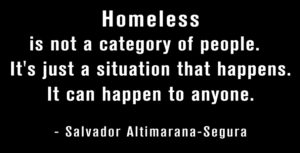
They don’t have swimsuits. But they do have a little time to play in the water before the food pantry opens.
After playing in the stream a few minutes before the pantry opens, they get out of the water, put their shoes back on, and head for the food pantry line.
When they begin to put on their shoes and head for the food pantry line, they remind us of the reality of August:
September is coming soon.
Labor Day comes the first Monday. The Magical August Moon is gone and we are all wearing our winter boots – forgetting the summer’s magic we found in August.

Thank you for reading this article. If you liked it, please share it with your favorite social media network and send it to your family and friends.

Let’s Live with Thurman Greco is a program aired weekly on Woodstock’s own educational TV Channel 23. This show is an informative, upbeat hour with no rehearsals. Some segments support the blog information and highlight Reiki Therapy, Hand and Foot Reflexology and other wellness subjects.
Guests are various people whose lives have brought them to Woodstock for a day, a week, an hour, a decade or more. I can truthfully boast that guests report they enjoy the experience.
Let’s Live has been running for over 15 years with an occasional intermission, now and then.
Enjoy interesting and fun programs while getting a peek into Woodstockers being themselves. Search “Let’s Live with Thurman Greco” on YouTube and check out the ever growing list of videos.
Please let me know what you think: thurmangreco@gmail.com
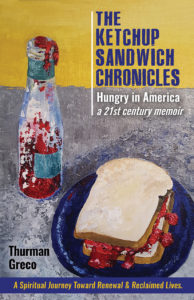
Buy this book from thurmangreco@gmail.com while the website is being repaired. Once it is repaired, you can get it at www.thurmangreco.com

“Healer’s Handbook” is in its third edition. So far, this book has gone out to three dozen different countries. The best way to order this book is to contact me at thurmangreco@gmail.com. To celebrate our 10th anniversary, this book is on sale for $10!
The books are all listed on www.thurmangreco.com but the website is undergoing repairs and upgrades.

“But for Gabriel” is available as both ebook and paperback at thurmangreco@gmail.com. This book is also on sale: $10!
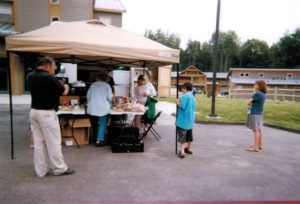
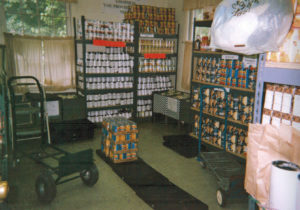
Contact me at thurmangreco@gmail.com with questions and comments.
Thanks again!
Thurman
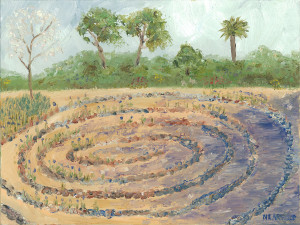
February 26, 2024 at 1:02 am
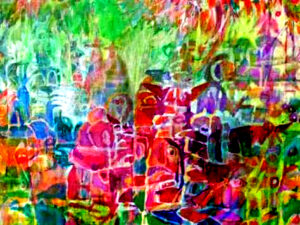
The political season begins again. In Woodstock, the politicians come calling. They knock on the door – their smiles open, their outfits perfect.
And, they don’t want to hear any questions – not from me, anyway.
I answer the door and listen to their message. I’m waiting to pounce, really. Because, I know they don’t know anything about hunger in our area.
And, I do know about hunger in our area.
The minute I open my mouth, they start to run for it.
Well, not so fast politician. Not so fast. You can’t leave my front door without taking a copy of one of my books with you.
I really know more about the economics of this area than they know. I know about children who go to school hungry. I know about families who routinely choose between food and transportation, food and housing, food and healthcare.
The politicians know their dance is up for today. Because I know about homelessness. I know the difference between shelter and housing.
Woodstock is a community where people working here come from somewhere else.
Each year, I figure that some kind of message will go out and no politicians will knock on my door. I’m wrong every year.
So, I sit – waiting to pounce.
Lord, I apologize. I simply can’t help myself. Someday, I’m going to apologize and know its the last time because I won’t act this way next time. I’d be lying to you now, Lord, if I even pretended that I won’t do it again.
I love pouncing on these people who knock on the door. I love to tell everyone how hard it is for the elderly to get food when their shoulders and knees don’t work anymore. I love to talk about friends I have who don’t drive anymore and who live in a food desert.
Lord, as seniors, we routinely pay more, get less, and do without. The without part comes because we’re outliving our savings.
I feel like everyone needs to know these things. How are the politicians going to know about them if I don’t tell them? I’ve convinced myself that its part of my job as a food pantry volunteer.
Food pantries are mostly hidden services. People shopping at one certainly don’t tell anyone where they get their groceries. And, the volunteers don’t talk either.

In the beginning, I was bothered about this but I’ve come to realize that food pantries are places where miracles happen. And, miracles are much easier if no one knows about them.
Lord, on behalf of everyone who shops or volunteers at a food pantry, I offer gratitude for the many miracles You perform on our pantry day.

And, Lord, thanks for sending these politicians over to my house every voting season. I love to pounce and then send them away with my books.
Thank you again Lord. I offer gratitude on behalf of everyone who shops or volunteers at a food pantry.
Amen

Thanks for reading this article! If you enjoyed it, check out some of the older articles. Hunger is not a Disease is an fascinating story about hunger in a small town food pantry. This blog has been relating stories and events for ten years!
I’m amazed when I read this. I never, in my wildest dreams, thought I would be writing about hunger and homelessness for over 10 years. And yet, here I am, plugging away!
What a journey this blog has been – and continues to be.
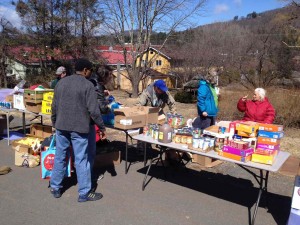
What was I thinking?
Please share this article with your friends and family. Forward it to your preferred social media network and post it on Facebook even.
Check out my books on www.thurmangreco.com. The website is being repaired so contact me at thurmangro@gmail.com to purchase one or more of the books.

Let’s Live with Thurman Greco is a program aired weekly on Woodstock’s own educational TV channel 23. This show is an informative, upbeat hour with no rehearsals. Some segments support the blog information and highlight Reiki Therapy, Hand and Food Reflexology, and other wellness subjects.
Guests are various people whose lives have brought them to Woodstock for a day, a week, an hour, a decade, or more. I can truthfully boast that guests report they enjoy the experience.
Let’s Live has been running for over 15 years with an occasional intermission now and then.
Enjoy interesting and fun programs while getting a peek into Woodstockers being themselves. Search “Let’s Live with Thurman Greco” on YOUTUBE and check out the ever growing list of videos.
Please contact me at thurmangreco@gmail with comments or questions.

February 22, 2024 at 12:38 am

Somehow, when I’m in a food pantry, I feel the presence of Mother Mary. She greets us and invites us to know her better. She is also ready to sit with us on our spiritual and physical journeys.

People go to Mary with issues related to children and with healing of all kinds. They go to Mary for forgiveness, compassion, and mercy. That puts her square in the middle of the food pantry line.
Mary has no doctrine. Nor does she have a dogma. Mary’s story shows us she knows intimately about hunger, suffering, sorrow, and death.

Mary’s prayers count.
Mary waits for us to reach out to her. Mary has been waiting for us long before we became aware of her.
Mary accepts us, whatever our beliefs. She doesn’t care whether we follow an established religion or even no religion. She accepts us as we come to her. Mary belongs to all faiths, all religions, all paths, and all people.

She protects, heals, and guides us all. She is there with us in the pantry line. She offers comfort in troubled times. Mary teaches that we all have value.
Sensing her presence, I feel she is showing us how to turn our pain into life lessons to help us cope with and enjoy life.
If we listen, Mary protects us when danger lies ahead.
I write these things because I somehow know that they are real. I know this to my bones. I’m not sure how this knowing came about. And, truthfully, I quit asking HOW a long time ago.
Working in a food pantry brought up questions that were dormant throughout my life. I pondered, worried, and searched for answers for years. I’ve finally decided that there are some things I don’t have the answers for yet.
And, so what. Do I have to know the answers to everything? After all, I’m only human. And, an old human at that.
All I can do is say “thank you” to Mary for being here for us.
Thank you Mary for holding me up in the food pantry when the numbers were too high and getting higher every week.
Thank you for being there with us all in that line.
Amen.
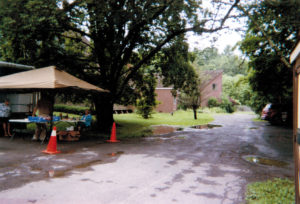
Thanks for reading this article. I am not here to challenge or change your beliefs about feeding the hungry or about any other thing, as far as that goes. I am not here to change your story. Instead, I am here as a conduit for your own healing.
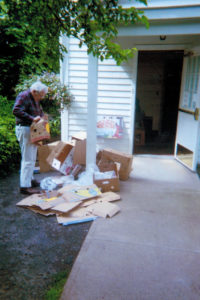
Please share this article with friends and relatives. Forward this post to your preferred social media network.
Check out my books on www.thurmangreco.com. The website is being repaired. To purchase a book or 2, please contact me at thurmangreco@gmail.com.

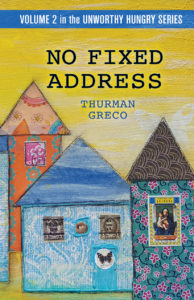

Let’s Live with Thurman Greco is a program aired weekly on Woodstock’s own educational TV channel 23. This show is an informative, upbeat hour with no rehearsals. Some segments support the blog information and highlight Reiki Therapy, Hand and Food Reflexology, and other wellness subjets.
Guests are various people whose lives have brought them to Woodstock for a day, a week, an hour, a decade or more. I can truthfully boast that guests report they enjoy the experience.
Let’s Live has been running for over 15 years with an occasional intermission, now and then.
Enjoy interesting and fun programs while getting a peek into Woodstockers being themselves. Search “Let’s Live with Thurman Greco” on YouTube and check out the ever growing list of videos.
Finally: THIS BLOG IS CELEBRATING ITS 10TH YEAR!!!!!!!!!!!!!!!!!!!!!!!!

February 16, 2024 at 8:59 pm

Families in communities everywhere make their way to a food pantry weekly. ly. And, grandmothers are an essential part of this mix, playing their part in different ways.
Grandmothers care for the grandchildren while their parents work 2 and 3 jobs each.
Because the crowded conditions in many pantries are stressful for some children, grandmothers care for the grandchildren while the mothers shop at a food pantry.
Shopping at a food pantry can take hours depending on the crowds and the lines. People don’t just “drop in” at a food pantry with a shopping list.
One family with 5 children attends the pantry weekly. Grandmother sits in the car and watches the children and Buffy the dog while mother shops. Somehow, grandmother manages to entertain the children as they all wait in the car. The mother stands in the line, first in the the parking lot and later in the building hallway, while she waits her turn to shop in the pantry for 3-4 minutes.
Grandmothers take their grandchildren shopping at a pantry when the parents work. One grandmother I know takes her grandson with her weekly. Little David is always delighted to choose an apple as a treat on each pantry visit.
Children in our country today shop in the pantry weekly with their mothers or grandmothers. Shopping with the family to put food on the table is an outing practiced weekly the world over.
Listening and chatting with these children over the years I’ve observed something: Many of these children have never been in a large grocery store or super market. A food pantry has a product selection of probably 50 to 100 items. A grocery store has a product selection of probably 10,000 to 50,000 items.
BLESS OUR FAMILIES, O LORD.
Whether they are families by blood or circumstances, make them holy.
Make Yourself easy to find Lord. Let us find you in our marriages, our families, our households, our communities and our relationships. Let us find you globally.
Many things in our daily lives seem to conspire to divide us. Help us see beyond the divisions and see a family. Help us embrace one another as a family. Help us love each other as a family .
May families in food pantries everywhere know your presence as they go about their days.
Amen

Thank you for reading this article! Please share it with your favorite social media network. Forward it to your friends, relatives, and neighbors.
Thanks for reading this article! If you’ve been reading posts here or, if you’ve just found this blog, I’m taking this opportunity to tell you that this blog, www.hungerisnotadisease.com and the companion blog, www.reflexologyforthespirit.com have been running for 10 years! Thanks for your patronage!
I hope you are enjoying this journey we are on together. I know the blog posts have travelled the world because their companion books have gone out to over 36 countries.
If you have any questions, or comments, please connect with me on facebook:
Thurman Greco

Have you been trying to purchase a book? That’s been a challenge for a while. BUT, I think we’ve fixed the problem. Please try again. If that doesn’t work, please email me at thurmangreco@gmail.com and I’ll send it right out!
You can find an inclusive title list. Visit www.thurmangreco.com and see what books interest you. Every title is available in both hard copy and ebook.
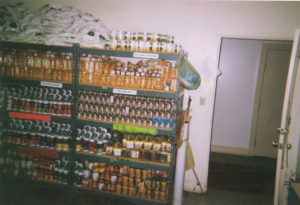
Preorder “A Healer’s Tarot Memoir”. It should be out in less than 2 months!

The YOUTUBE channel, “Let’s Live with Thurman Greco” is older than the blogs and the website. The YOUTUBE channel has been running with new shows weekly for over 20 years. Some of the earlier shows never made it to YOUTUBE. When we find them, Renee posts them.
Please check the shows out! “Let’s Live with Thurman Greco” is a positive, entertaining series of interviews which I’ve conducted over the years. My guests enjoy being on the show and many ask to return.
One thing we all have in common: we’ve all met up with each other somehow in Woodstock, NY

With blogs, books, classes and sessions, I am not here to change your story. I am here as a conduit for your healing.

Thanks again!
Email me at thurmangreco@gmail.com if you have questions or comments.
February 11, 2024 at 10:00 pm

Lord, this prayer is for the brave and diligent shopper. She walks in. And she never misses a week.
Lord, she is ferociously focused on getting to the pantry.

Looking neither left or right, dismissing the rain, or the cold, or the boiling heat, she makes her way each week through the crowded parking lot.
I pray for her grace, energy, and willpower. I pray that someone or maybe several someones can witness and celebrate her discipline and focus.
And, I pray that others will notice her voyage each and every week. I don’t want to be the only one who sees her gracefully make her way through the crowded shoppers waiting outside the pantry for it to open.
Lord, I know you sent her to lift our hearts: patient, lovely, graceful. She is our inspiration.
I think of her on shopping days when I drive to Albany for extra food. She keeps my own work ethic steady.
And, she lifts my heart.
So, thank you again for sending her.
Amen

You can purchase this latest book about the spiritual journey of hunger at www.thurmangreco.com.

Please check out the YOUTUBE channel show. Renee, our own wizard, loads new episodes on Tuesdays. “Let’s Live with Thurman Greco” is a positive, entertaining series of conversations with local VIPs that I’ve conducted throughout the last 15 years or so. There have been a few intermissions throughout the years, but not many.
My guests enjoy being on the show and many ask to return. One thing we all have in common: we’ve all met each other somehow in Woodstock, NY
AND thank you for reading this article. This blog post, and the others soon to come, celebrate 10 years of Hunger is not a Disease.
Find out more about Thurman at www.thurmangreco.com.
Send me an email at thurmangreco@gmail.com.
Join me on facebook!
Thurman Greco
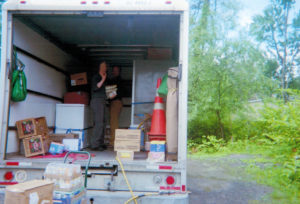
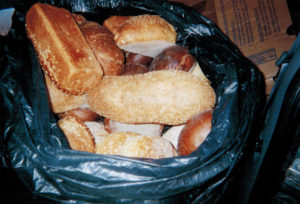
February 11, 2024 at 10:13 am

Lord, you know I do need them, of course.
For each sore shoulder pain or back spasm that goes away after a while: THANK YOU!
The small pains remind me of all the pantry work that needs to be done every day. When the small pains come around, they remind me to pray for more volunteers.
So, thanks for the sneezing fits and scratchy throats I get every delivery day.
The last time I had a sharp pain on delivery day, I caught myself praying in surprise. And, guess what! The entire Roberts family showed up to help. It was just a miracle – that’s all.
And, one afternoon, I had a shoulder pain during the pantry shift and a volunteer stepped out of the line and helped us all that day. And, he kept returning every week for several months.
For me, these small pains are reminders that I should ask for help and be ready for it to show up!
What these pains mean is that I should also hold out hope for the coming miracles.
After all, miracles happened and I couldn’t hide from them. I was in denial for the longest time but, eventually, I had to face facts. When I finally owned up to their reality, I saw they were special miracles for a food pantry.
Stigmata, relics, icons, and visions weren’t appropriate for the pantry.
Nobody controlled how or when they happened, only whether or not they were seen for what they were. I wasn’t focused on the miracles because I was busy paying attention to lifting boxes, stocking shelves, filling out forms, driving to the dump with the trash.
And, so, Lord, I promise to try to ask for help when the pantry needs it.
Meanwhile…thank you…and…Amen

THANKS FOR READING THIS POST! It’s been a long time, hasn’t it?
I have a whole volume’s worth of meditations, devotions, short stories filled with gratitude and thanksgiving.
Please let me know what you think: thurmangreco@gmail.com.
“Miracles” is on sale at thurmangreco.com.
“Let’s Live with Thurman Greco” – the YOUTUBE channel is a place to stay on top of Thurman’s video productions.
My guests are various people whose lives have brought them to Woodstock for a day, a week, an hour, a decade or more. I can truthfully boast that my guests report they enjoyed the experience and will be happy to return.
Subscribe today and never miss a show!
Both the blog and the show are a means to healing for viewers.

Thanks for reading this article. Please share it with your friends and family. Forward it to your favorite social media network.

This book is available at www.thurmangreco.com
It is my latest book about food pantries, hunger, and Woodstock.
ENJOY!
August 30, 2022 at 7:54 pm

A first-time shopper in a food pantry looks at the available foods and the question coming to mind is “How am I going to get a meal out of this?”
Supermarket shoppers push some foods aside, choosing other items. When that happens, a store manager sends the rejected boxes and cans to the food bank where they land at the last stop: a food pantry somewhere.
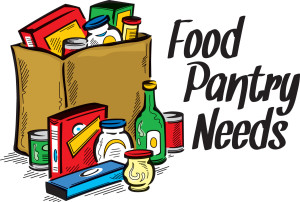
Foods ending up on a pantry shelf are often unrecognizable to the ordinary person shopping at the supermarket.
Food pantry shoppers may not know how to make their future happen but they know standing still isn’t the answer. To be hungry is to search for spiritual sustenance, mental stamina, physical endurance, emotional balance, and food.
People go hungry when the income, whatever its source, isn’t enough to meet the cost of living.
When a person lives with hunger, just waking up in the morning and going through the day challenges heart and soul. A normal existence seems impossible. Every chance at happiness seems lost.
Most food pantry volunteers and shoppers I know are in a reconstructing and healing mode. Life is finally improving! After losing everything, getting things right again means taking many steps. For some it means “No matter how hard I try, I’m never going to be able to fix this mess”.
But this isn’t necessarily true. Hunger doesn’t rob us of every chance for happiness. Figuring this all out means trying new things again and again and again.

Food insecurity leads to questioning everything including our basic beliefs because they failed us from the getgo. For many, searching for a stable food supply, a roof, gas in the car, clothes, and healthcare becomes a search for God.
The soul needs compassion, forgiveness, and the ability to give more than take.
When shoppers don’t have enough food to eat, giving and sharing and believing are necessary. Because there are no road maps for this trip, the soul becomes the guide.
Volunteering in the pantry changes lives and heals people. My first visit to a food pantry changed my life. In my heart, I feel a food pantry has opportunities waiting for us. They are different for everyone, but they are there.
It takes much energy and time to find a food pantry you can get to and where you can shop. A person can burn up many phone minutes doing this. This experience strips away any illusions we have about ourselves and the world, and how our lives are unraveling.
Thank you for reading this blog post. I feel you are reading this article for a reason.
Maybe you need a moment for yourself. Maybe you are seeking information to change your life. There are interesting, informative, and life changing articles on this blog which date back to 2013.
Maybe you can benefit from some of the information in this blog. I feel that you can discover some strategies for boosting your life and times.

Please share this blog post with your preferred social media network and forward it to your friends and family.
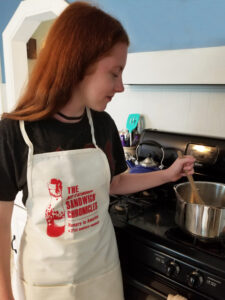 Learn more about hunger and homelessness on YOUTUBE at “Let’s Live with Thurman Greco”
Learn more about hunger and homelessness on YOUTUBE at “Let’s Live with Thurman Greco”

Find out more about Thurman at www.Thurmangreco.com.
Thanks again!
Thurman
December 18, 2021 at 6:22 pm

Every December, we celebrate Christmas, often with a tree and a Nativity scene. We exchange gifts and worship the birth of Jesus on Christmas Eve or Christmas morning.

We often give generously to others in gratitude for the blessings we have received throughout the year – through the practice of Biblical stewardship.

Food pantries throughout our nation anticipate this generosity. Often, the food received will carry a pantry into February or March. Most people who drop off a bag of groceries have no idea how important this donation is to the shoppers and volunteers in the pantry!

Seeking facts surrounding this annual celebration, I read Bible stories and sermons, essays, and books on the birth of Jesus written by priests, pastors, missionaries, and Bishops.
The story I found is not so much an account of what happened as it is a chronicle about a group of people and an angel on a spiritual journey to fulfill a prophecy.
ARCHANGEL GABRIEL
Over time, and throughout the world, parents consult with Gabriel for strength and guidance concerning challenges they experience during child conception or adoption, and early childhood.
Archangel Gabriel is a patron of communicators, including TV, radio, computer communications, and telephone; even postal workers.
Research showed me this story brings meaning for today. Both personal and political transformation involved every character on this journey.
GABRIEL AND ZECHARIAH
For me, the first scene begins with Elizabeth and her spouse, Zechariah. Elizabeth was an older cousin of Mary living in Judah. They tried for years to have children.
Gabriel first appeared to Zechariah in the temple.

“Elizabeth will give birth to a son. John the Baptist will convert many people to God. He will be great in the sight of the Lord. He is never to drink wine or fermented drinks. He is filled with the Holy Spirit even before he is born.”
(Luke 1:13-16)
Zechariah questioned this news: “How can I be sure of this? I am an old man and my wife is well along in years.”
The angel replied: “I am Gabriel. I stand in the presence of God. I have been sent to bring you this good news! You will be silent and not speak until this happens.” (Luke 1:19-20)
Zechariah left the temple, unable to utter a sound.

GABRIEL AND MARY
Mary enters the story as a young girl growing up in a small town, Nazareth. Mary was born into a devout Jewish family in the time of Herrod, about 4 BC.
Having reached puberty, Mary was ready for marriage. Because she was a practicing Jewish girl, her parents Joachim and Anna felt they should find a suitable Jewish man for her.
They settled on Joseph – an older man in the community, a carpenter.
Mary pledged to marry Joseph. Both Joseph and Mary were excited about this.
Before her appointed wedding day, the angel Gabriel appeared to Mary with a surprise: “You are to conceive and become the mother to the Messiah. You shall name him Jesus.”
Mary responds: “How can this happen? I am a virgin.” (Luke 1:34) This is when Mary discovered her destiny.
Tradition has it that her parents were horrified when Mary told them about Gabriel and the coming Jesus.
Mary disgraced her family because this news brought them shame. Mary and Joseph were engaged but were not yet living together.
Community customs offered Mary, her family, and Joseph three options, all bad:
She could marry Joseph.
Joseph could publicly denounce her and divorce her, possibly result in her stoning.
Finally, he could marry Mary and then quietly divorce her. Legends tell us Joseph preferred this third option.

THE MAGNIFICAT
Mary’s parents were so upset by her news that they sent her to visit Elizabeth, Mary’s older cousin, living in the hill country of Judea.
When Mary arrived at her home, Elizabeth’s baby leaped in her womb, and she explained to Mary:
“Blessed are you among women. And, blessed is the child you will hear!” (Luke 1:42).
Mary replied:
“My soul glorifies the Lord
and my spirit rejoices in God my Savior,
for he has been mindful
of the humble state of his servant.
From now on all generations will call me blessed,
for the Mighty One has done great things for me –
holy is his name.
His mercy extends to those who fear him,
from generation to generation.
He has performed mighty deeds with his arm;
He has scattered those who are proud in their inmost thoughts.
He brought down rulers from their thrones
but has lifted up the humble.
He has filled the hungry with good things
but he has sent the rich away empty.
He has helped his servant Israel,
remembering to be merciful
to Abraham and his descendants forever,
just as he promised our ancestors.” (Luke 1:46-55).
GABRIEL AND JOSEPH
Legends and historical references indicate that Mary returned home from visiting Elizabeth when she was about six months pregnant.
While Mary traveled home, Gabriel visited Joseph in a dream:
“Joseph, do not be afraid to marry Mary. The child she carries is from the Holy Spirit. You are to name him Jesus. He will save his people from their sins.” (Matt. 1:20-21)
Joseph brought her into the home he had built, and they lived together. It was clear to Joseph that this was the work of God.
THE BENEDICTUS
Meanwhile, back at Judah, at the time of the birth of John the Baptist, Zechariah was filled with the holy spirit and spoke again. He voiced a prophecy:
“Blessed be the Lord God of Israel,
For he has looked favorably on his people and redeemed them.
He has raised up a mighty savior for us
in the house of his servant David,
As he spoke through the mouth of his holy prophets from of old,
that we would be saved from our enemies and from the
hand of all who hate us.
Thus he has shown the mercy promised to our ancestors,
and has remembered his holy covenent,
the oath that he swore to our ancestor Abraham,
to grant us that we, being rescued from the hands of our enemies,
might serve him without fear, in holiness and
righteousness
before him all our days.
And, you, child, will be called the prophet of the Most High;
For you will go before the Lord to prepare his ways,
to give knowledge of salvation to his people
by the forgiveness of their sins.
By the tender mercy of our God,
the dawn from on high will break upon us,
to give light to those who sit in darkness and in the shadow
of death,
to guide our feet into the way of peace.” (Luke 1:67-79)
JESUS
A short time before Mary’s expected due date, the Roman government decreed a census. Everyone had to return to their hometown to register.
Joseph and Mary packed a donkey and took for Bethlehem. They stayed in an overcrowded inn where Jesus was born. They ended up in the barn with Jesus sleeping in a manger filled with a freshly-made straw bed.
Jesus was vulnerable here; yet powerful, in the barn. He quietly witnessed the event.
A star appeared to lead Magi, teachers, shepherds, and priests to the inn.
The angel Gabriel appeared to them: “Do not be afraid. I bring good news that will cause joy for people. A savior has been born to you. He is the messiah.”
(Luke 2:10-11)
When the star stopped, they found Jesus, Mary, and Joseph. They bowed down and worshiped the baby Jesus.
A multitude of angels joined Gabriel singing,
“Glory to God in the highest heaven,
And on earth peace to those whom his favor rests!” (Luke 2:14)
Having been warned of danger, they gave gifts of gold, frankincense, and myrrh and then returned to their country by a different route, spreading the word of Jesus as they went.
GABRIEL AND JOSEPH
After they left, Gabriel again appeared to Joseph in a dream:
“Get up. Take the child and his mother and escape to Egypt. Stay there until I tell you.”
Joseph got up, took Jesus and Mary in the middle of the night, and headed for Egypt, where they stayed until Herrod died. (Matt. 2:13-14).
Tradition has it that Joseph took comfort in a favorite psalm.
PSALM 86
Have mercy on me, Lord,
hear me, Lord, and answer me,
for I am poor and needy.
Guard my life, for I am faithful to you;
save your servant who trusts in you.
You are my God; have mercy on me, Lord,
for I call to you all day long.
Bring joy to your sevant, Lord,
for I put my trust in you.
You, Lord, are forgiving and good,
abounding in love to all who call to you.
Hear my prayer, Lord
listen to my cry for mercy.
When I am in distress, I call to you,
Because you answer me.
Among the gods there is none like you, Lord;
no deeds can compare with yours.
All the nations you have made
will come and worship before you Lord;
they will bring glory to your name.
For you are great and do marvelous deeds:
You alone are God.
Teach me your way, Lord,
that I may rely on your faithfulness;
Give me an undivided heart,
that I may fear your name.
I will praise you, Lord my God, with all my heart.
I will glorify your name forever.
For great is your love toward me;
you have delivered me from the depths,
from the realm of the dead.
Arrogant foes are attacking me, O God;
ruthless people are trying to kill me –
they have no regard for you.
But you, Lord, are a compassionate and gracious God,
slow to anger, abounding in love and faithfulness.
Turn to me and have mercy on me;
Show your strength on behalf of your servant;
save me, because I love you
just as my mother did.
Give me a sign of goodness,
that my enemies may see it and be put to shame,
for you, Lord, have helped me and comforted me.
JOHN THE BAPTIST

John hung out in the desert wilderness as an adult, preaching repentance and baptizing people in the River Jordan. “Repent for the Kingsom of God is at hand.” (Matt. 3.2)
As it is written in Isaiah the prophet:
“I will send my messenger ahead of you.
who will prepare your way”-
“a voice of one calling in the wilderness,
Prepare the way for the Lord,
Make straight paths for him. (Mark 1:2-3)
John’s clothes were made of camel’s hair and he had a leather belt around his waist. His food was locusts and wild honey. (Matt 3:4)
“I baptize you with water for repentance. But after me comes one who is more powerful than I, whose sandals I am not worthy to carry. He will baptize you with the Holy Spirit and fire.” (Matt 3:11)
People went to John and listened to his message because they looked for prophecy. They sought signs of redemption and salvation. (Matt. 11:7)
THE END?
Their journey did not end here. They traveled on, calling from their hearts. Following Christ, they experienced a balance between human and divine.
Jesus was both the son of Mary and the Son of God.

Thank you for reading this article. Please refer it to your favorite social media network. Share it with your friends and family.

Scripture quotations were taken from The Holy Bible, New International Version, NIV
Copyright 1973, 1978, 1984, 2011 by Biblica, Inc.
If you have further questions or remarks, I can be reached at thurmangreco@gmail.com.
Jennette Nearhood and Michele Garner provided the artwork of Mary and the Angels.

December 15, 2021 at 1:36 am

Thank you for your support throughout the year and for the holidays.
I’m hoping that you can continue to include your “feeding the hungry” activities throughout the coming year! Your donations translate into hot meals, safe shelter, and a reminder to the hungry and unhoused that there are those out there who care.
Your generosity changes lives. Food pantries, soup kitchens, and shelters restore people’s lives.
It takes all of us to support those in need.
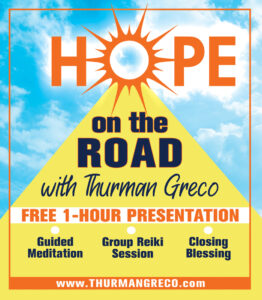

Do you have a crowded closet? Winter clothing needs include:
warm coats
foot wear – especially boots
warm gloves and hats
jeans and pants
sweatpants
long underwear
The items most often resquested: socks
– – – – – – – – –
Thanks for reading this blog post. Please share it on your preferred social media network. Forward it to your friends and relatives.
Find more information about hunger and homelessness on “Let’s Live with Thurman Greco” on YOUTUBE.
www.thurmangreco.com
www.hungerisnotadisease.com
THANK YOU FOR CARING!

Do you want to learn more about hunger and homelessness in America? You can find more info in previous posts on this blog.
September 7, 2021 at 11:48 am

Persons with no fixed address live in what some refer to as an “invisible world”. With your help, they may not be stuck there. Making their day-to-day lives a bit easier is helpful and important. There ARE things you can do.
This list of ten things to do may seem a little bizarre to you. But, a List of Shelters is very different from a List of Food Pantries or Soup Kitchens.
If you take this list seriously and use some of the suggestions, you’ll understand.
You’ll see.
But, whether you try to do one item or all ten, I send you gratitude. The things you do will ripple kindness out beyond your circle. And, right now, kindness is needed desperately.
DEVELOP A LIST OF SHELTERS
Search out local shelters and create a list card. List each shelter by location and include phone numbers and a bit of information which may be helpful to those without addresses.
Distribute copies of this card to homeless people.
MAKE A LIST OF FOOD PANTRIES
A homeless-friendly food pantry distributes ready-to-eat items like peanut butter and crackers in individual packets, cereal and milk in individual containers. Some food pantries offer small containers of fresh fruits and vegetables.
Search out area food pantries that are homeless friendly. Make an info card listing hours and days each pantry is open. Include the phone number, address and directions to get there.
Distribute copies of this card.
INCLUDE A LIST OF SOUP KITCHENS
Search out area soup kitchens. Make an info card listing hours and days each soup kitchen is open. Include the phone number and address with directions to find it.
Carry copies of this card to distribute.
DONATE CLOTHING
Organizations serving the homeless always need gently used items in good condition. They need items in all sizes from infant to XXL and beyond.
Blankets and sleeping bags are in demand year round.
People are always asking for socks.

DONATE GROCERIES
Because the homeless carry their kitchens in their pockets, their food needs are specific: peanut butter and crackers in individual containers, individual packets of vegetables and fruits to be eaten raw (such as strawberries or carrots), cereal packed in individual containers, milk packed in individual containers.
When someone in your community conducts a food drive, donate a bag full of homeless-friendly foods.
If no one is having a food drive, fill a grocery bag with food and take it to your local food pantry, shelter, or soup kitchen.
Better yet, hold a food drive yourself.
In the past I’ve blogged posts about holding a food drive. Several dates of these posts include May 3, 2018, January 13, 2021 – February 11, 2021 – February 25, 2021. There are others.
Food drives are not difficult and they can be fun. Everyone should have the experience. Email me if you have questions. thurmangreo@gmail.com
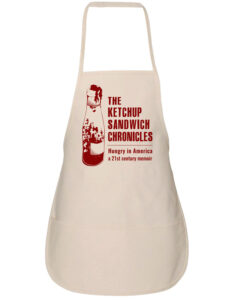
VOLUNTEER AT A SHELTER
Shelters depend on volunteers to sign people in, and cook and serve meals. Depending on the resources of the shelter, you may be able to do other things such as helping kids with homework, teaching ESL classes, writing resumes.
VOLUNTEER AT A SOUP KITCHEN
Soup kitchen volunteers pick up donations of food, help prepare and serve meals, cleaning up at the end of the shift.
VOLUNTEER AT A FOOD PANTRY
Volunteering at a food pantry is a community experience. I did it for years. Never, at any moment, did I feel I was wasting my time.
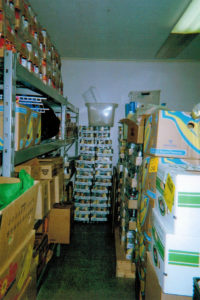
SHARE A MEAL
Whenever you leave your home, bring a bagged meal to share with a person on the street.
ADVOCATE
When you do a few of the things on this short list, you will find yourself involved in your community, even if that was not your intention.
Your interest in hunger and homelessness automatically makes you an advocate – even if you don’t think you are. When you help feed hungry and homeless people, you are fighting hunger in our country.
Most people in food pantries distribute a 3-day supply of food to everyone in each household.
But, however you see yourself, your good work, kindness, and generosity will ripple out beyond yourself and your community.
One thing is for sure, we need more good work, kindness, and generosity rippling out.
Something else happens when you share info cards, bagged lunches, food, and sleeping bags:
The homeless people you interact with begin to lose their invisibility. You replace that invisibility with respect when you treat them as individuals. Courtesy, kind words and a smile will change not only your life but theirs. .
You may even learn someone’s name!

Thank you for reading this blog post. Please share it with your favorite social media network.
Forward it to a friend or relative.
Learn more about hunger and homelessness on YOUTUBE at “Let’s Live with Thurman Greco”.


 Hats, aprons, T-shirts, and books are available at www.thurmangreco.com
Hats, aprons, T-shirts, and books are available at www.thurmangreco.com
Having touble finding YOUTUBE interviews? Send an email to thurmangreco@gmail.com. We’ll get you there!

Thanks!
Thurman Greco

One last commercial here: A “HOPE on the ROAD” presentation was recorded and is on YOUTUBE. Tune in to YOUTUBE to benefit from this presentation.
I can present a segment of “HOPE on the ROAD” to your library, your organization, your class, your group.
If you are a Reiki practitioner, “HOPE on the ROAD” is easy to learn so you can present it to people in your area.
There is no charge for “HOPE on the ROAD”. To participate in “HOPE on the ROAD”, contact me at thurmangreco@gmail.com.
Thanks again,
Thurman











 Hats, aprons, T-shirts, and books are available at www.thurmangreco.com
Hats, aprons, T-shirts, and books are available at www.thurmangreco.com































